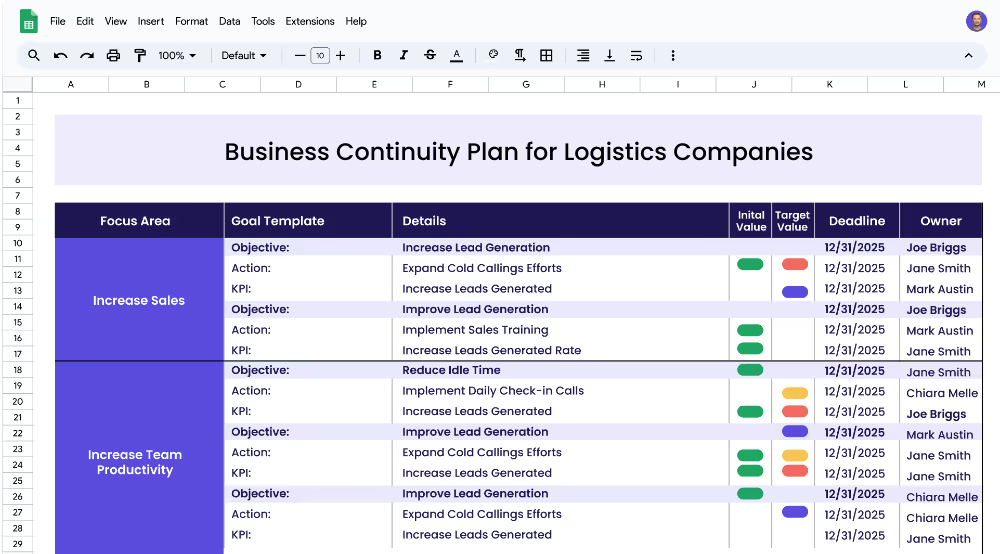A Business Continuity Plan (BCP) for Logistics Companies is a strategy that outlines how the organization will continue to provide transportation, warehousing, and distribution services during emergencies or disruptions to the supply chain. It includes the processes, procedures, and tools that logistics companies can use to identify potential risks, adjust operations accordingly, and ultimately minimize any negative impacts on the business. This plan is essential for any logistics company to ensure the reliability and continuity of their services.
Each focus area has its own objectives, projects, and KPIs to ensure that the strategy is comprehensive and effective.
The Business Continuity Plan for Logistics Companies template is designed to help logistics and supply chain companies develop their business continuity plans. This template provides a structured approach to help companies identify risks, set objectives, assess progress, and ultimately increase the resilience of their operations.
Focus areas are the main categories for the plan. They are typically broad topics or goals of the plan, such as 'Develop Business Continuity Plan' or 'Enhance Logistics Infrastructure'. Each focus area should have its own objectives, actions, and KPIs.
Objectives are the specific goals or outcomes that the company wants to achieve under each focus area. Objectives should be SMART (Specific, Measurable, Achievable, Relevant, and Time-bound). Examples of some objectives for the focus area of Develop Business Continuity Plan could be: Improve Logistics and Supply Chain Resilience, and Increase Awareness of Supply Chain Risks.
KPIs (Key Performance Indicators) are measurable targets that can be used to track progress towards achieving an objective. Each KPI should have an initial value, a target value, and a unit of measure. An example of a KPI for the focus area of Develop Business Continuity Plan could be: Reduce Business Impact from Unplanned Disruptions.
Projects or actions are the steps that need to be taken to achieve an objective. Each project should have a description of what needs to be done, a timeline for completion, and a list of resources needed to complete the project. An example of a project related to Develop Business Continuity Plan could be: Involve all BUs in BCP workshops.
If you’re ready to accelerate your strategy and see faster results, consider using Cascade Strategy Execution Software. Unlike spreadsheets, Cascade provides a streamlined platform designed to help you create, track, and execute your strategy with ease. Sign-up for free or book a demo with one of our strategy experts to get started today!


